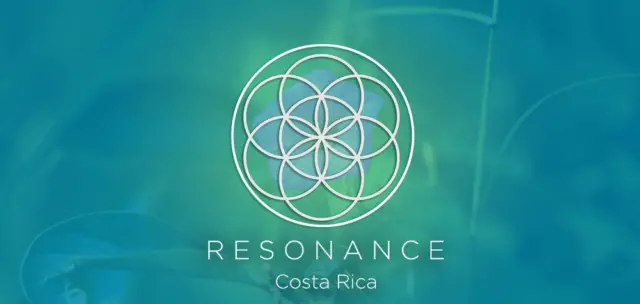Tucked away beneath the bustling Plaza de la Democracia in downtown San José, Costa Rica, lies a hidden gem that offers a profound journey into the nation’s ancient heart: the **Museo de Precolombino de Costa Rica** (Museum of Pre-Columbian Art). More than just a repository of artifacts, this subterranean sanctuary, housed within a converted military bunker, is a powerful testament to the sophisticated, diverse, and deeply spiritual cultures that flourished in this region long before the arrival of Europeans. It’s a place where silence speaks volumes, and stone, gold, and clay whisper stories of resilience, artistry, and connection to the natural world.
From Bunker to Beacon: A Symbolic Transformation
The museum’s very location is a narrative. The structure was originally built in 1917 as a military fortress, a symbol of defense and conflict. In a move profoundly symbolic of Costa Rica’s national identity – a country that abolished its army in 1948 – this bastion of war was repurposed. In 1982, it opened its doors as a museum dedicated to peace and cultural preservation. Descending into its cool, dimly lit galleries feels like entering a time capsule, a deliberate separation from the noise above, inviting visitors to slow down and engage with the past on its own terms. This transformation from military bunker to cultural haven perfectly embodies Costa Rica’s modern commitment to peace, education, and heritage.
A Tapestry of Ancient Cultures: Beyond the Maya and Aztec
One of the museum’s most crucial roles is to challenge the common misconception that pre-Columbian art is synonymous solely with the grand civilizations of the Maya, Aztec, or Inca. Costa Rica, situated as a cultural bridge between Mesoamerica and the Andean region, nurtured its own unique and vibrant artistic traditions. The museum showcases the remarkable diversity of societies that thrived here for over 2,000 years, from around 1500 BCE to 1500 CE. These were not isolated tribes but complex chiefdoms with distinct languages, social structures, and worldviews, interacting through trade networks that spanned continents. The artifacts on display reflect this rich tapestry, highlighting local ingenuity and adaptation.
The Collections: Jade, Gold, and Ceramic Soul
The museum’s permanent exhibition is thoughtfully organized into three main sections, each focusing on a primary material that held immense significance for ancient Costa Ricans:
1. **The Jade Room: Green Power and Eternal Life:** Jade was more valuable than gold to many ancient Costa Rican cultures. Revered for its toughness, luminous green color (symbolizing water, maize, and life force), and rarity, it was the ultimate symbol of status, power, and connection to the spiritual realm. The collection is stunning: intricately carved pendants (often depicting shamans, deities, or powerful animals like eagles and jaguars), ear spools, beads, and ceremonial axes (celts). The craftsmanship is breathtaking, considering the tools available. These objects weren’t merely decorative; they were amulets, badges of rank, and conduits to the divine, buried with the elite to accompany them into the afterlife.
2. **The Gold Room: The Sun’s Radiance and Divine Authority:** While jade held spiritual primacy, gold became increasingly important in later periods, particularly from 700 CE onwards. Its brilliance was associated with the sun, celestial power, and the divine authority of chiefs and shamans. The museum displays exquisite gold work – delicate pectorals (breastplates), intricate pendants, bells, and figurines created using sophisticated techniques like lost-wax casting. These shimmering artifacts, often depicting human-animal hybrids (suggesting shamanic transformation) or powerful deities, convey the wealth, ritual complexity, and cosmological beliefs of the Diquis culture and others who mastered metallurgy.
3. **The Ceramic Room: Everyday Life, Ritual, and Expression:** This is perhaps the most relatable and diverse collection, offering a window into the daily lives, rituals, and artistic sensibilities of ancient peoples. The museum houses thousands of ceramic vessels, figurines, and musical instruments. The range is astonishing: large, beautifully painted urns used for burial or storing grain; functional bowls and pots; and, most captivatingly, the expressive figurines. These small clay statues depict individuals in various poses – often seated, sometimes holding objects or children, frequently adorned with intricate body paint, tattoos, and elaborate headdresses. Their large, almond-shaped eyes seem to gaze directly across the centuries, conveying individuality, emotion, and social roles (shamans, warriors, mothers, musicians). They are not anonymous artifacts but portraits of a people.
Beyond the Objects: Understanding the “Why”
The museum excels not just in displaying artifacts but in contextualizing them. Informative panels (in Spanish and English) explain the techniques used, the symbolic meanings embedded in the designs (animals representing power or spirits, geometric patterns signifying cosmic order), and the social and religious practices surrounding the objects. Reconstructions of tombs and displays of ancient tools help visitors understand the processes involved. This context transforms the artifacts from mere curiosities into keys unlocking the worldview of their creators – their relationship with nature, their concepts of life and death, their social hierarchies, and their profound artistic expression.
A Serene Conclusion: The Jade Garden
Emerging from the underground galleries, visitors find themselves in a tranquil, open-air courtyard known as the **Jade Garden**. This peaceful space, featuring native plants and a large jade sphere, provides a moment for reflection. It symbolizes the continuity between the ancient reverence for jade and nature and Costa Rica’s modern commitment to environmental preservation. It’s a perfect, serene conclusion to the journey through time.
Why Visit?
The Museo de Precolombino de Costa Rica is essential for anyone seeking to understand the country beyond its rainforests and beaches. It offers a profound connection to the roots of Costa Rican identity, showcasing the ingenuity, spirituality, and artistic brilliance of its first peoples. It challenges stereotypes, fosters respect for indigenous heritage, and provides a quiet, contemplative space in the heart of the capital. By preserving and presenting these treasures, the museum ensures that the voices of Costa Rica’s ancient cultures continue to resonate, reminding us that the nation’s story is deep, complex, and enduringly fascinating. It’s not just a museum; it’s a journey into the soul of a nation.

